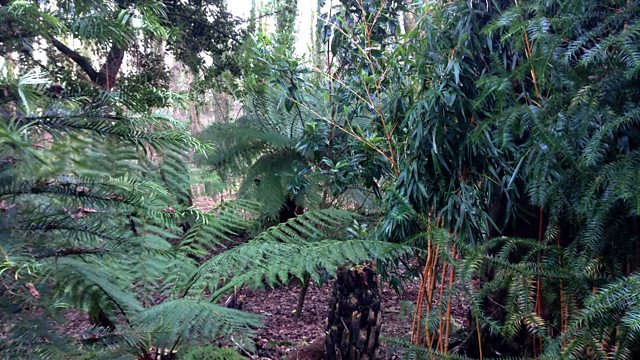Wyke Regis, Weymouth
Peter Gibbs chairs the horticultural panel programme from Wyke Regis, Weymouth. With Chris Beardshaw, Bunny Guinness and Anne Swithinbank.
Peter Gibbs chairs GQT from Wyke Regis, Weymouth. Chris Beardshaw, Bunny Guinness and Anne Swithinbank answer questions from the audience of local gardeners.
Also in this episode, Chris Beardshaw explores Abbotsbury Subtropical Gardens to find out what the incredible Jurassic Coast can teach us about plant history, and James Wong visits Bob Flowerdew's garden for the last in a series of winter topical tips.
Produced by Darby Dorras.
Assistant Producer: Hannah Newton.
A Somethin' Else production for 麻豆社 Radio 4.
This week's questions:
Q. Does the panel have any knowledge of using low powered LED light panels to extend the day length for newly germinated seedlings?
A. Only in the past few years have they become usable because they now provide the correct spectrum of light to encourage healthy plant growth. Compared to the old growing lamps, they are much more cost effective and burn a lot cooler. They do provide the potential to grow things all the year round; however, it might be more efficient to wait a few weeks and sow them in the traditional manner under a cloche or propagator. It is the early plants, such as cucumbers and tomatoes, which need the extra warmth. The layers of glass surrounding them reduce their light levels, so LED panels can be really beneficial.
Q. I had a strange scaly pest covering my Blackcurrants last year. Should I be worried if I see it again?
A. It is likely to be a type of scale. They will be sucking the sap from the stems and leaving their eggs behind. You should try pruning them out and be very vigilant. Eggs will be over-wintering, so check the new growth with a magnifying glass and apply a soft soap solution too deter them. The scale only affects the older stems, so prune back hard and only leave young stems.
Q. I am trying to create a 'fedge' using Willow saplings. Can I leave them in pots to reduce their growth?
A. A 'fedge' is a hybrid between a fence and a hedge. You will need big pots and will have to maintain them. Clip at least five times a year to retain any form. You will find that they will self-graft where they are able to touch other plants.
Q. I have two Honeysuckles in my garden: one evergreen and one deciduous. They have become very woody and are no longer attractive. Would it be ok to cut them right back or should I start again?
A. It is fine to cut them to the ground but you will lose the flowers. You could cut a third each year to save some of the flowers. You may find that you only have one or two very long, old stems and little young growth to cut further down. If this is the case, try bringing some upper young growth down to the ground and encourage them to root by pegging them. Think about adding other plants, such as the hybrid flowering Clematis Jackmanii Superba. Some of the thornless roses, such as the primrose-like Rosa Banksiae 'Lutea' would work with Honeysuckle. The general rule is to prune after flowering and you won't miss a season.
Q. How can I get nice compact heads on my Cauliflower and Calabrese Broccoli?
A. Cauliflower is not easy to grow. They need generous spacing and really firm ground. Plant them in a deep drill and it will fill in as they are growing. The ground should not have been recently dug over. Make sure you cover them over so that the caterpillars don't get to them.
Q. The local roundabouts have recently been replaced by traffic islands. What can we do to inject planting back into our streets?
A. Try adding street trees to compensate. You could also try flowering hardy annuals such as Cosmos, Nigella or Calendula. They would only require a skim of soil and would look amazing for the summer period. They are also very cheap and easy to grow. Sow the seeds and you will be able to walk away for nine months before strimming them down and starting again.
Q. What could I plant in a redundant wellington boot to give me a colourful display later in the year?
A. You need to put some holes in the bottom, add some pebbles to make it sturdy and fill it with good, gritty potting compost. As the boot is a pink colour, you could use a trailing, dark-coloured Petunia.
It would be worth planting a range of bulbs and annuals for the autumn. The Guernsey Lily Nerine Sarniensis is a lovely option. It has explosions of fluted curved petals and an almost jeweled frosted finish.
Last on
More episodes
Previous
Clip
-
![]()
What should I plant in my boot?
Duration: 02:43
Broadcasts
- Fri 21 Feb 2014 15:00麻豆社 Radio 4
- Sun 23 Feb 2014 14:00麻豆社 Radio 4
Six of GQT鈥檚 naughtiest gardening innuendos
When Gardeners' Question Time got mucky.
Podcast
-
![]()
Gardeners' Question Time
Horticultural programme featuring a group of gardening experts



